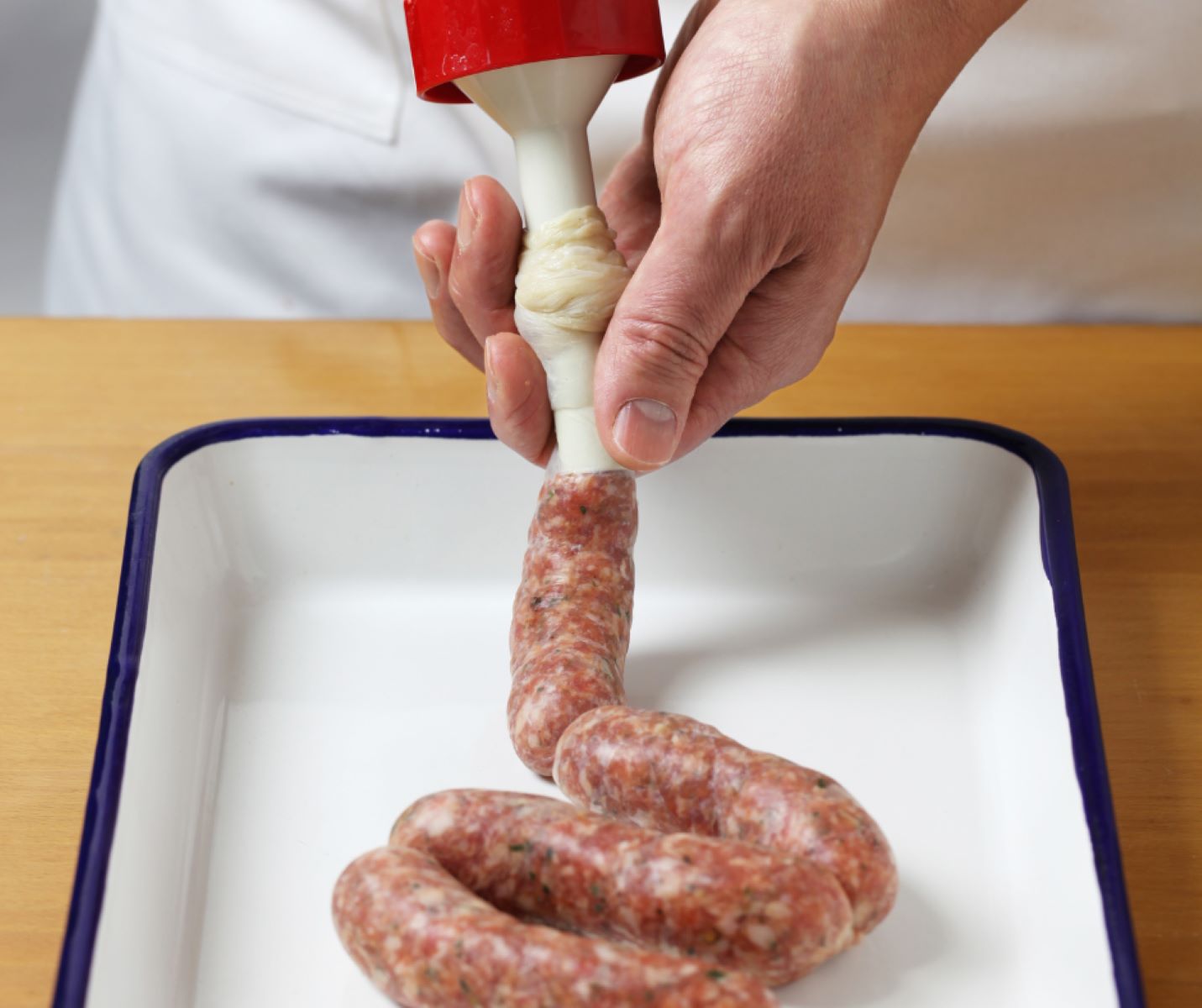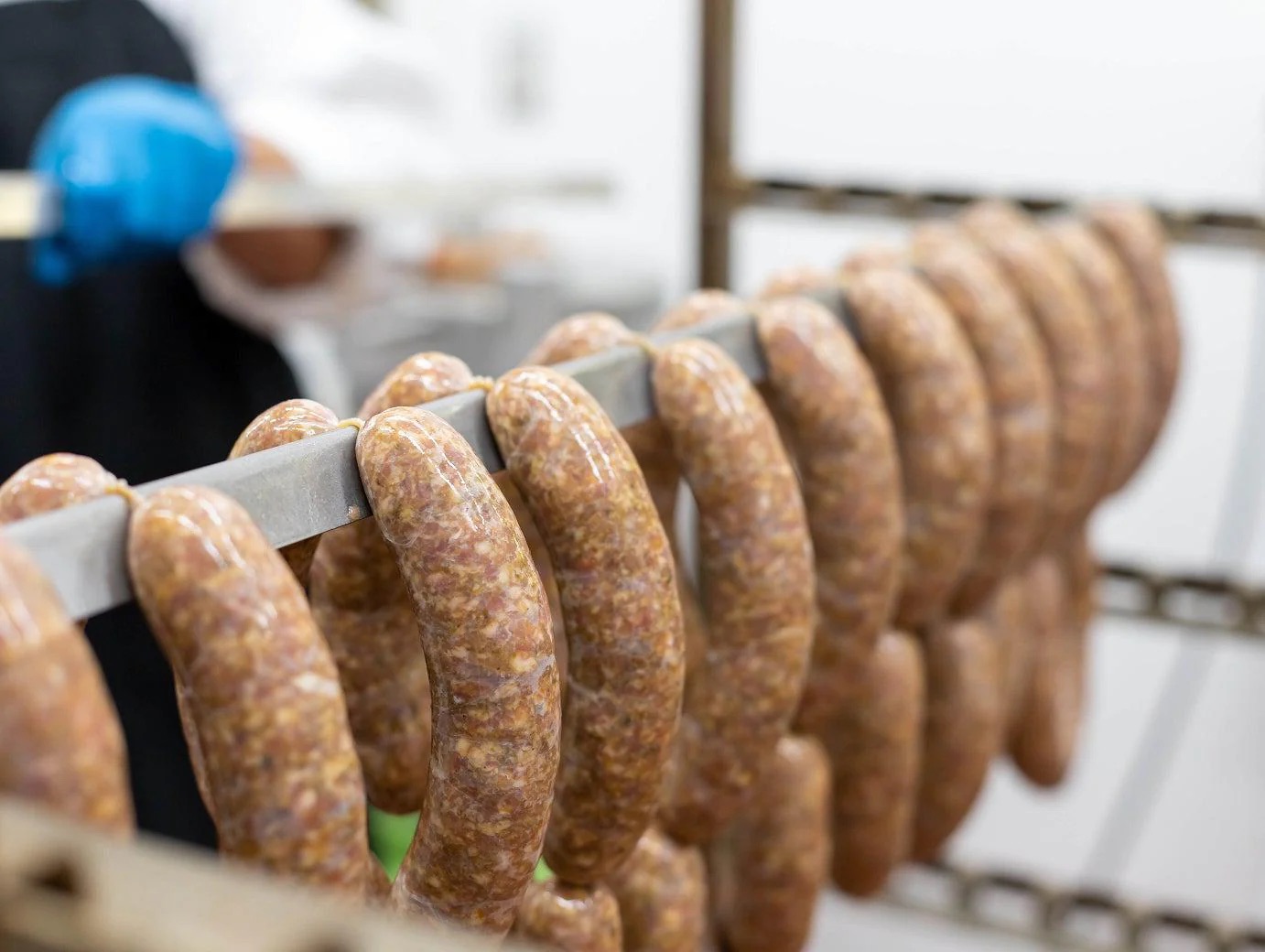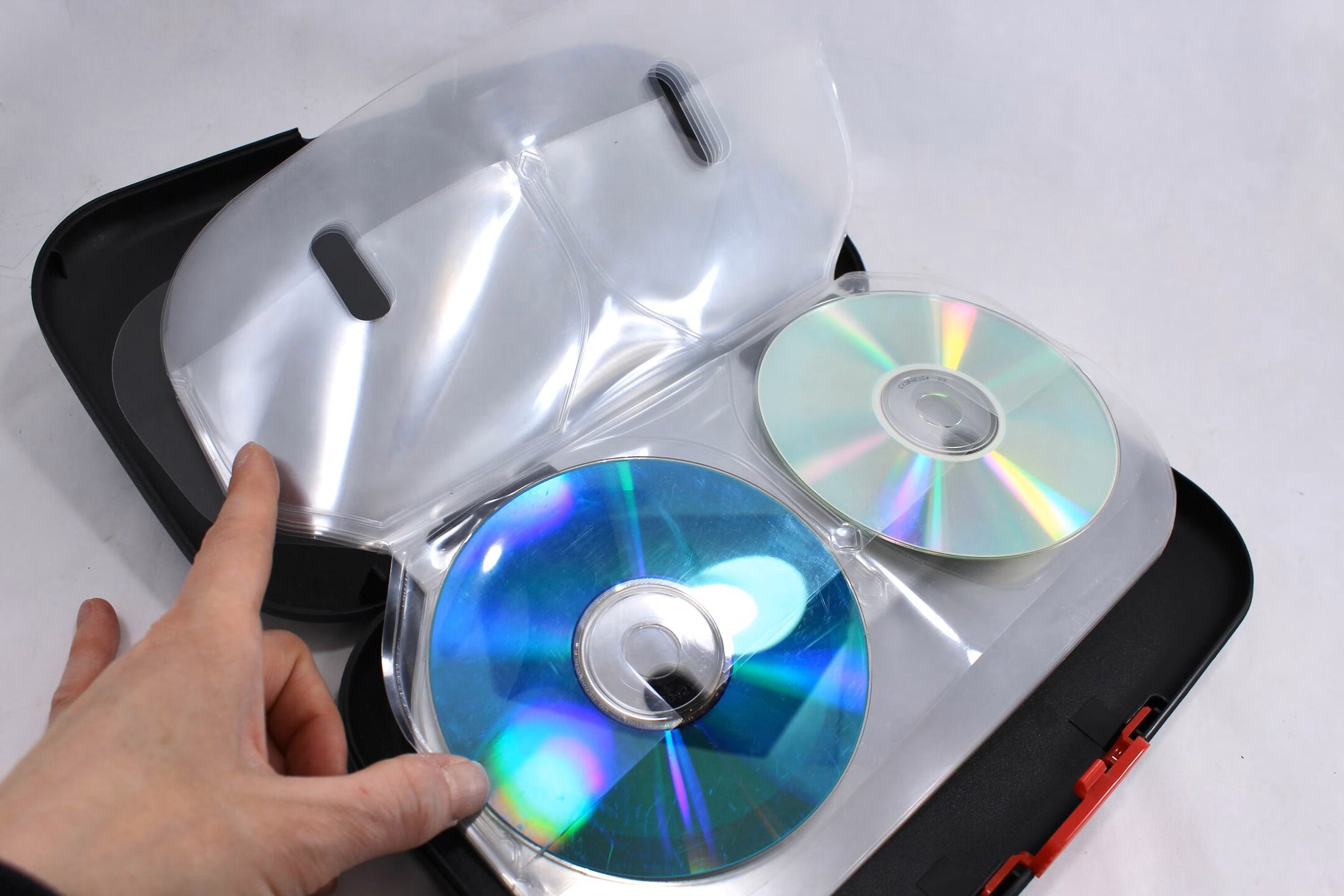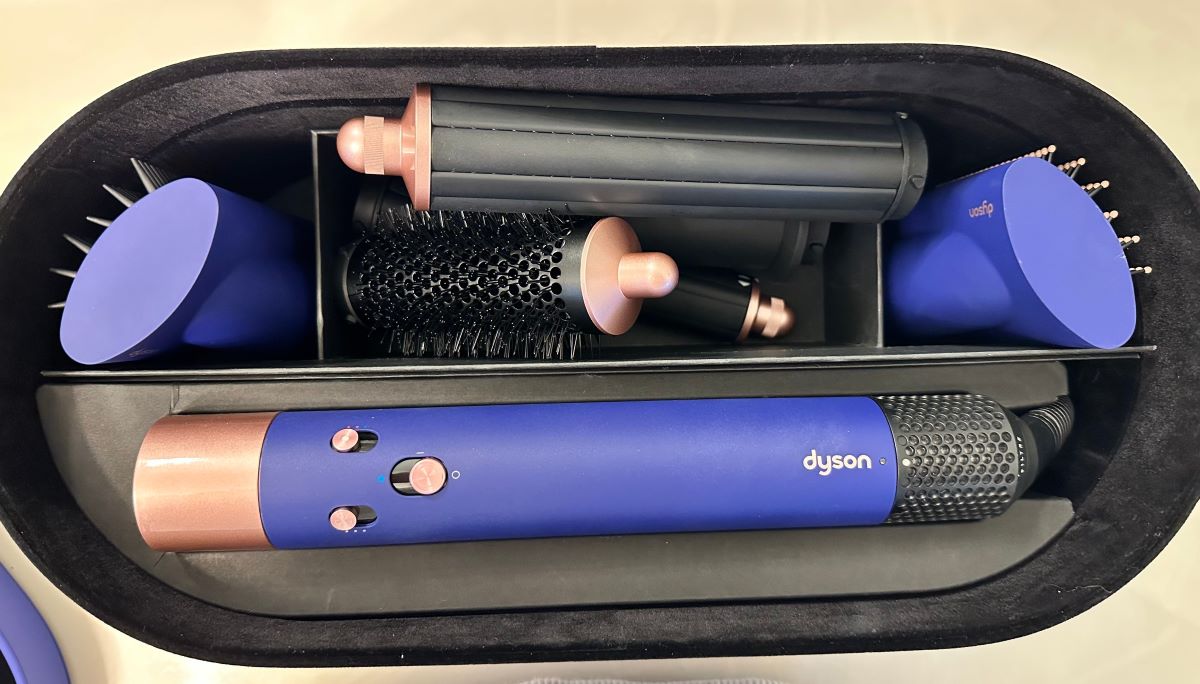

Articles
How To Store Sausage Casings
Modified: December 7, 2023
Learn the best practices for storing sausage casings in this informative article. Proper storage techniques ensure freshness and extend the lifespan of your casings.
(Many of the links in this article redirect to a specific reviewed product. Your purchase of these products through affiliate links helps to generate commission for Storables.com, at no extra cost. Learn more)
Introduction
When it comes to making sausages at home, one of the essential components is the sausage casings. These casings act as a protective layer, holding the meat mixture in place and giving the sausages their signature shape. To ensure the quality and longevity of your sausage casings, proper storage is crucial.
In this article, we will explore the importance of properly storing sausage casings and provide you with helpful tips on how to store them to maintain their freshness and usability. Whether you’re an amateur sausage maker or a seasoned pro, understanding the best practices for storing sausage casings will help you produce top-quality sausages every time.
Key Takeaways:
- Properly storing sausage casings is crucial for maintaining their quality, freshness, and usability. From selecting the right storage container to monitoring their condition, attention to detail ensures top-notch homemade sausages every time.
- By following best storage practices, you can prolong the shelf life of sausage casings, save money, and create delicious sausages with confidence. Prioritize proper storage to elevate your homemade sausages to new heights of flavor and quality.
Read more: How To Store Sausage
Importance of Properly Storing Sausage Casings
Proper storage of sausage casings is essential for maintaining their quality and usability. Here are a few reasons why it’s important to store sausage casings correctly:
- Prolongs Shelf Life: By storing sausage casings properly, you can extend their shelf life and ensure they remain in optimal condition for longer periods. This is particularly important if you buy casings in bulk or plan to make sausages infrequently.
- Preserves Freshness: Sausage casings have natural moisture content that keeps them supple and pliable. When stored correctly, the casings retain this moisture, preventing them from becoming dry and brittle.
- Prevents Contamination: Proper storage helps prevent contamination from bacteria or other microorganisms that can affect the quality and safety of the casings. Storing casings in a clean and controlled environment reduces the risk of spoilage and ensures they remain suitable for use.
- Maintains Texture: Sausage casings contribute to the texture of the final product. By storing them correctly, you can preserve their elasticity and texture, resulting in sausages that have an appealing bite and mouthfeel.
- Cost-Effective: Improper storage can lead to casings becoming unusable or spoiled, resulting in wasted money. By storing casings properly, you can avoid unnecessary expenses and ensure you get the most out of your investment.
By understanding the importance of proper storage, you can ensure that your sausage casings remain in optimal condition, allowing you to create delicious sausages that impress your friends and family.
Choosing the Right Storage Container
When it comes to storing sausage casings, choosing the right storage container is crucial. Here are some factors to consider when selecting a container:
- Airtightness: It is important to choose a container that is airtight to prevent air and moisture from entering. This helps maintain the freshness and quality of the casings.
- Material: Choose a container made of a food-safe material that does not react with the casings or affect their flavor. Glass or food-grade plastic containers are excellent choices.
- Size: Select a container that can comfortably accommodate the length and size of your sausage casings. Avoid overcrowding the casings as it can lead to deformation or damage.
- Transparency: Opt for a container that is transparent or has a clear lid. This allows you to easily see the quantity and condition of the casings without opening the container.
- Compartmentalization: If you have different types or sizes of casings, consider using a container with compartments. This helps keep the casings organized and prevents them from tangling together.
- Stackability: If you have limited storage space, choose containers that are stackable. This allows you to maximize the use of vertical space and keep your sausage casings neatly stored.
Once you have chosen the right storage container, make sure to clean and sanitize it before storing the casings. This ensures that there is no residue or contaminants that could compromise the quality of the casings.
By selecting an appropriate storage container, you can safeguard your sausage casings and maintain their freshness and usability for a longer period of time. This will contribute to the overall success and satisfaction of your sausage-making endeavors.
Temperature and Humidity Requirements
Proper temperature and humidity play a vital role in preserving the quality of sausage casings. Here are some guidelines to follow:
- Temperature: It is important to store sausage casings in a cool and consistent temperature environment. The ideal temperature range for storing casings is between 40°F (4°C) to 50°F (10°C). Avoid storing them in areas prone to temperature fluctuations, such as near heaters or in direct sunlight.
- Humidity: Sausage casings should be stored in a controlled humidity environment. The recommended humidity level for storing casings is around 60% to 70%. This helps prevent the casings from drying out too much or becoming excessively moist, which can impact their quality.
- Avoid Freezing: While maintaining a low temperature is essential, it is crucial to avoid freezing sausage casings. Freezing can cause the casings to become brittle and lose their elasticity. Instead, aim for a cool and consistent temperature within the recommended range.
- Avoid Excessive Moisture: While humidity is important, excessive moisture can be detrimental to sausage casings. High humidity can cause the casings to become slimy and promote bacterial growth. Make sure the storage environment is adequately ventilated to prevent excess moisture buildup.
It’s worth noting that different types of casings may have specific temperature and humidity requirements. For example, natural casings, such as hog or sheep casings, may require slightly different storage conditions compared to collagen or cellulose casings. Always refer to the manufacturer’s recommendations for specific casing types.
By adhering to the proper temperature and humidity requirements, you can ensure that your sausage casings remain in optimal condition and are ready for use whenever you decide to make sausages.
After using sausage casings, rinse them thoroughly with cold water, then soak them in a saltwater solution. Store them in a sealed container with salt to prevent spoilage, and keep them refrigerated for up to one year.
Cleaning and Drying Sausage Casings
Before storing sausage casings, it is important to ensure they are properly cleaned and dried. This helps remove any impurities and bacteria, and prevents the growth of mold or spoilage. Here are some steps to follow when cleaning and drying sausage casings:
- Rinsing: Begin by rinsing the casings thoroughly under cool running water. This helps remove any excess salt or other preservatives that may be present.
- Soaking: Next, place the casings in a bowl filled with clean water. Allow them to soak for 30 minutes to an hour. This helps rehydrate the casings and softens them for easy handling.
- Flushing: Once soaked, flush the casings by gently running water through them. This helps remove any remaining salt or debris from the inside of the casings.
- Secondary Soak: After flushing, transfer the casings to a fresh bowl of clean water and let them soak for an additional 30 minutes. This helps ensure any impurities or residue are fully removed.
- Draining: Once completely soaked, drain the casings and gently squeeze out any excess water. Avoid wringing or twisting the casings too tightly to prevent damage.
- Drying: To dry the casings, carefully hang them in a well-ventilated area or use a clean towel to pat them dry. Avoid using excessive heat or direct sunlight, as it can cause the casings to become brittle.
It’s important to note that some casings, such as collagen or cellulose casings, may come pre-packaged and ready to use without requiring any cleaning or soaking. In such cases, simply follow the manufacturer’s instructions for handling and storage.
By following these cleaning and drying steps, you can ensure that your sausage casings are properly sanitized, free from impurities, and ready for storage.
Read more: How To Store Sausage Balls
Tips for Long-Term Storage
If you plan to store sausage casings for an extended period, following these tips can help ensure their longevity and quality:
- Label and Date: Properly label your storage container with the type and date of the casings. This helps you identify and use the oldest casings first, reducing the risk of spoilage.
- Vacuum Sealing: Consider vacuum-sealing your sausage casings to remove excess air and maintain their freshness. This method helps prevent oxidation and prolongs the shelf life of the casings.
- Use Desiccants: Place desiccant packets in the storage container to absorb any excess moisture that may be present. This helps prevent moisture-related issues such as mold or mildew.
- Keep Away from Strong Odors: Store your sausage casings away from strong-smelling substances, as they can absorb odors easily. This ensures that the casings maintain their natural flavor and aroma.
- Regularly Check and Rotate: Periodically check your stored casings for any signs of degradation or spoilage. Rotate the containers to ensure that all casings are used in a timely manner.
- Avoid Overstocking: It’s best not to overstock on casings unless you have a large-scale sausage production operation. Instead, purchase smaller quantities and replenish as needed to avoid casings sitting in storage for excessively long periods.
- Temperature Monitoring: Keep a thermometer in the storage area to regularly monitor the temperature. This ensures that the casings are maintained within the recommended temperature range.
By following these long-term storage tips, you can maximize the shelf life of your sausage casings and ensure they remain in optimal condition for future use.
Monitoring and Checking Stored Sausage Casings
Proper monitoring and periodic checks are essential to ensure the quality and usability of stored sausage casings. Here are some important aspects to consider when monitoring and checking your stored casings:
- Regular Inspections: Set a schedule to inspect your stored casings at regular intervals. This allows you to identify any signs of spoilage or deterioration early on.
- Visual Examination: Examine the casings closely for any discoloration, mold growth, or unpleasant odors. If you notice any of these signs, it’s best to discard the affected casings to prevent any risk of contamination.
- Texture Check: Feel the casings to ensure they are still supple and have retained their elasticity. Casings that have become dry, brittle, or excessively moist may indicate improper storage conditions or degradation.
- Snapping Test: Perform a snapping test by gently bending the casing. If it breaks with a clean snap, it is an indication of casings that have become too dry or brittle and may not be suitable for use.
- Odor Assessment: Smell the casings to check for any off or foul odors. Fresh casings should have a neutral scent, while spoiled casings may emit unpleasant smells.
- Keep Records: Maintain a record of inspection dates, any findings, and the overall condition of the casings. This helps you track the quality and usability of stored casings over time.
- Dispose of Spoiled Casings: If you encounter any casings that show signs of spoilage, promptly dispose of them to prevent any contamination or negative impact on other stored casings.
By regularly monitoring and checking your stored casings, you can ensure their quality and safety. This allows you to use the casings with confidence and produce delicious sausages every time.
Conclusion
Properly storing sausage casings is essential for maintaining their quality, freshness, and usability. By following the tips and guidelines provided in this article, you can ensure that your sausage casings remain in optimal condition, ready to be used whenever you embark on your sausage-making journey.
From selecting the right storage container to maintaining the ideal temperature and humidity levels, each step plays a crucial role in preserving the integrity of your sausage casings. Cleaning and drying the casings before storage helps remove impurities and ensure a hygienic environment for long-term storage.
Additionally, paying attention to proper monitoring and regular checks allows you to catch any signs of spoilage or degradation early on. This helps prevent the use of compromised casings and ensures the safety of your final sausage product.
Remember, maintaining the quality of your sausage casings not only ensures successful sausage-making but also contributes to cost-effective practices and reduces waste. By implementing the best storage practices, you can prolong the shelf life of your casings, save money, and create delicious sausages with confidence.
So, whether you’re a seasoned sausage maker or an enthusiastic beginner, prioritize proper storage of your sausage casings. Your dedication and attention to detail will undoubtedly elevate your homemade sausages to new heights of flavor and quality.
Frequently Asked Questions about How To Store Sausage Casings
Was this page helpful?
At Storables.com, we guarantee accurate and reliable information. Our content, validated by Expert Board Contributors, is crafted following stringent Editorial Policies. We're committed to providing you with well-researched, expert-backed insights for all your informational needs.















0 thoughts on “How To Store Sausage Casings”